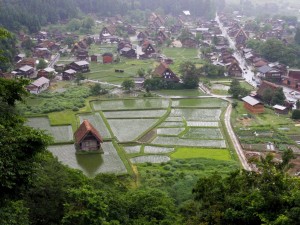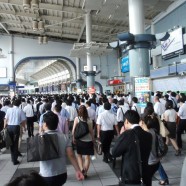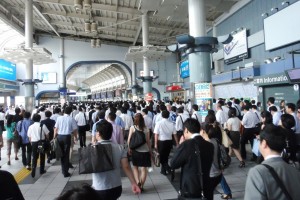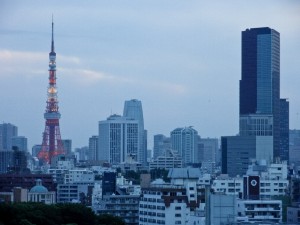Visting Japan After the Earthquake and Tsunami
A first hand report on Tokyo and the surrounding area’s recovery in the aftermath of the disaster.
When I was recently offered the opportunity to travel to Japan, I jumped at the chance to see how the tourism industry was recovering from the March 2011 earthquake and tsunami. Seeing what my clients can expect once they arrive better enables me to continue selling this amazing destination.
The devastation from the earthquake and tsunami were cataclysmic, and I wasn’t quite sure what to expect. It’s hard to imagine anyone recovering from the horrors that we witnessed nightly on television broadcasts, but Japan is one of the most advanced and powerful nations on the planet, with a long of history being able to recover from the depths of despair and then excel to new heights.
As I made my way around Tokyo, I didn’t see any visible damage to the city from the earthquake, the one exception being that the very top of the Tokyo Tower is slightly bent. The subway and trains are back on schedule with no service interruptions. One thing clients will notice, however, is that Tokyo is in the middle of an energy shortage. With two of its largest power-generating stations out of commission, residents, businesses and hotels are doing their part to avoid brown-outs. The bright lights of Shinjuku, Ginza and other Tokyo hot spots turn off a little earlier these days. Shopkeepers dim the lights until you enter; then they raise them up to allow you to see clearly. Most buildings — including hotels — have raised the temperatures on air conditioners in order to save on energy, making lobbies stuffier than usual. Clients will still have full control over air conditioning in their rooms, however.
For those worried about the possibility of being exposed to radiation, daily reports are included in all major newspapers comparing Japan’s ambient radiation to other modern cities in the world. Imagine how surprised I was to learn Tokyo’s average daily ambient radiation is lower than that in New York, Bangkok or Paris. Sharing this information with clients will help to put their minds, and those of their loved ones, at ease.
One thing that was noticeable is how Australians and New Zealanders have been quick to return to Japan, taking advantage of some of the most competitive pricing for air and hotels seen in years. Many Japanese businesspeople expressed their eagerness to see travelers from the U.S. and Canada return soon as well — to them this is the sign that the tourism industry is heading toward a full recovery.

Shirakawa-go, one of Japan's numerous UNESCO World Heritage sites. (c) PRIDE Travel / S. Nathan DePetris
Although I did not have the chance to visit Tokohama, the region most affected by the earthquake and tsunami, I did get to meet with some of the local Japanese volunteers. I learned from them that there are thousands of volunteers helping in the region. This is great news for Hiraizumi in Tokohama region, which was recently awarded UNESCO World Heritage Site status (status was also awarded to Japan’s Ogasawara Islands at the same time). While in Tokyo, I was offered and reviewed itineraries being produced by some of Japan’s largest tour operators to attract visitors into the area to take advantage of new UNESCO status.
After visiting, I am now confident that my clients’ travels to Japan will be smooth and without problems when they visit. During my trip, I saw that both Narita and Haneda airports were both operating as usual with an added bonus: The immigration and customs lines were extremely fast. The devastating effect of the earthquake and tsunami will take Japan years to recover from. Travel professionals can do our part in helping to speed the process along by continuing to support this exciting destination and promoting the return of our clients.
Nathan DePetris
Nathan DePetris is owner and COO of Pride Travel, a full-service leisure agency that also specializes in catering to the needs of gay and lesbian clientele. He chairs southern California ASTA’s Young Professional Society, has sailed on more than four dozen cruises and traveled to almost 40 countries. DePetris holds several industry certifications, most notably from CLIA, the Travel Institute and various destination visitors’ bureaus, including Japan, Korea and Thailand.
www.pride.travel
First published: TravelAge West magazine, August 5, 2011










 Editor Marc Kassouf owns Pride Travel agency. He holds numerous travel industry certifications and has received one of the travel industry’s most prestigious awards, the WAVE TrendSetter, four times; the TrendSetter recognizes excellence and exceptional achievements of travel agencies and their executives. Kassouf sat on two board committees of the International Gay and Lesbian Travel Association, has traveled to nearly four dozen countries and has sailed on more than 60 cruises.
Editor Marc Kassouf owns Pride Travel agency. He holds numerous travel industry certifications and has received one of the travel industry’s most prestigious awards, the WAVE TrendSetter, four times; the TrendSetter recognizes excellence and exceptional achievements of travel agencies and their executives. Kassouf sat on two board committees of the International Gay and Lesbian Travel Association, has traveled to nearly four dozen countries and has sailed on more than 60 cruises.







